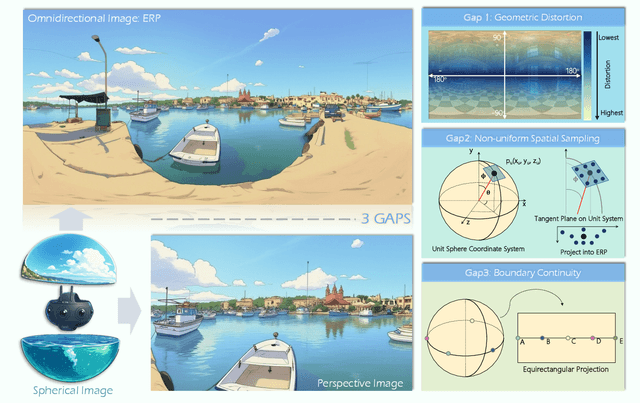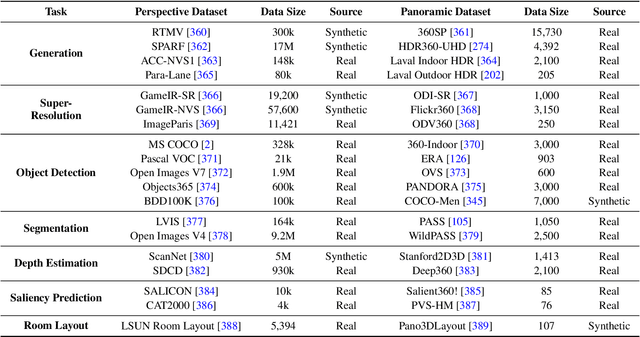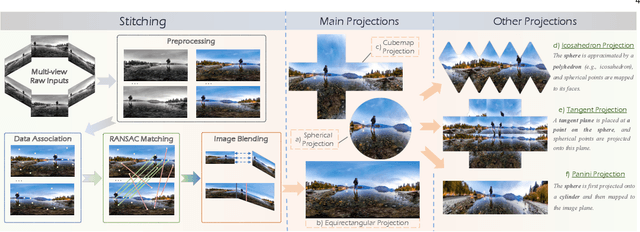Bo Du
TGC-Net: A Structure-Aware and Semantically-Aligned Framework for Text-Guided Medical Image Segmentation
Dec 24, 2025Abstract:Text-guided medical segmentation enhances segmentation accuracy by utilizing clinical reports as auxiliary information. However, existing methods typically rely on unaligned image and text encoders, which necessitate complex interaction modules for multimodal fusion. While CLIP provides a pre-aligned multimodal feature space, its direct application to medical imaging is limited by three main issues: insufficient preservation of fine-grained anatomical structures, inadequate modeling of complex clinical descriptions, and domain-specific semantic misalignment. To tackle these challenges, we propose TGC-Net, a CLIP-based framework focusing on parameter-efficient, task-specific adaptations. Specifically, it incorporates a Semantic-Structural Synergy Encoder (SSE) that augments CLIP's ViT with a CNN branch for multi-scale structural refinement, a Domain-Augmented Text Encoder (DATE) that injects large-language-model-derived medical knowledge, and a Vision-Language Calibration Module (VLCM) that refines cross-modal correspondence in a unified feature space. Experiments on five datasets across chest X-ray and thoracic CT modalities demonstrate that TGC-Net achieves state-of-the-art performance with substantially fewer trainable parameters, including notable Dice gains on challenging benchmarks.
A DeepSeek-Powered AI System for Automated Chest Radiograph Interpretation in Clinical Practice
Dec 23, 2025Abstract:A global shortage of radiologists has been exacerbated by the significant volume of chest X-ray workloads, particularly in primary care. Although multimodal large language models show promise, existing evaluations predominantly rely on automated metrics or retrospective analyses, lacking rigorous prospective clinical validation. Janus-Pro-CXR (1B), a chest X-ray interpretation system based on DeepSeek Janus-Pro model, was developed and rigorously validated through a multicenter prospective trial (NCT07117266). Our system outperforms state-of-the-art X-ray report generation models in automated report generation, surpassing even larger-scale models including ChatGPT 4o (200B parameters), while demonstrating reliable detection of six clinically critical radiographic findings. Retrospective evaluation confirms significantly higher report accuracy than Janus-Pro and ChatGPT 4o. In prospective clinical deployment, AI assistance significantly improved report quality scores, reduced interpretation time by 18.3% (P < 0.001), and was preferred by a majority of experts in 54.3% of cases. Through lightweight architecture and domain-specific optimization, Janus-Pro-CXR improves diagnostic reliability and workflow efficiency, particularly in resource-constrained settings. The model architecture and implementation framework will be open-sourced to facilitate the clinical translation of AI-assisted radiology solutions.
Depth Any Panoramas: A Foundation Model for Panoramic Depth Estimation
Dec 18, 2025Abstract:In this work, we present a panoramic metric depth foundation model that generalizes across diverse scene distances. We explore a data-in-the-loop paradigm from the view of both data construction and framework design. We collect a large-scale dataset by combining public datasets, high-quality synthetic data from our UE5 simulator and text-to-image models, and real panoramic images from the web. To reduce domain gaps between indoor/outdoor and synthetic/real data, we introduce a three-stage pseudo-label curation pipeline to generate reliable ground truth for unlabeled images. For the model, we adopt DINOv3-Large as the backbone for its strong pre-trained generalization, and introduce a plug-and-play range mask head, sharpness-centric optimization, and geometry-centric optimization to improve robustness to varying distances and enforce geometric consistency across views. Experiments on multiple benchmarks (e.g., Stanford2D3D, Matterport3D, and Deep360) demonstrate strong performance and zero-shot generalization, with particularly robust and stable metric predictions in diverse real-world scenes. The project page can be found at: \href{https://insta360-research-team.github.io/DAP_website/} {https://insta360-research-team.github.io/DAP\_website/}
CFLight: Enhancing Safety with Traffic Signal Control through Counterfactual Learning
Dec 16, 2025Abstract:Traffic accidents result in millions of injuries and fatalities globally, with a significant number occurring at intersections each year. Traffic Signal Control (TSC) is an effective strategy for enhancing safety at these urban junctures. Despite the growing popularity of Reinforcement Learning (RL) methods in optimizing TSC, these methods often prioritize driving efficiency over safety, thus failing to address the critical balance between these two aspects. Additionally, these methods usually need more interpretability. CounterFactual (CF) learning is a promising approach for various causal analysis fields. In this study, we introduce a novel framework to improve RL for safety aspects in TSC. This framework introduces a novel method based on CF learning to address the question: ``What if, when an unsafe event occurs, we backtrack to perform alternative actions, and will this unsafe event still occur in the subsequent period?'' To answer this question, we propose a new structure causal model to predict the result after executing different actions, and we propose a new CF module that integrates with additional ``X'' modules to promote safe RL practices. Our new algorithm, CFLight, which is derived from this framework, effectively tackles challenging safety events and significantly improves safety at intersections through a near-zero collision control strategy. Through extensive numerical experiments on both real-world and synthetic datasets, we demonstrate that CFLight reduces collisions and improves overall traffic performance compared to conventional RL methods and the recent safe RL model. Moreover, our method represents a generalized and safe framework for RL methods, opening possibilities for applications in other domains. The data and code are available in the github https://github.com/AdvancedAI-ComplexSystem/SmartCity/tree/main/CFLight.
DevPiolt: Operation Recommendation for IoT Devices at Xiaomi Home
Nov 18, 2025



Abstract:Operation recommendation for IoT devices refers to generating personalized device operations for users based on their context, such as historical operations, environment information, and device status. This task is crucial for enhancing user satisfaction and corporate profits. Existing recommendation models struggle with complex operation logic, diverse user preferences, and sensitive to suboptimal suggestions, limiting their applicability to IoT device operations. To address these issues, we propose DevPiolt, a LLM-based recommendation model for IoT device operations. Specifically, we first equip the LLM with fundamental domain knowledge of IoT operations via continual pre-training and multi-task fine-tuning. Then, we employ direct preference optimization to align the fine-tuned LLM with specific user preferences. Finally, we design a confidence-based exposure control mechanism to avoid negative user experiences from low-quality recommendations. Extensive experiments show that DevPiolt significantly outperforms baselines on all datasets, with an average improvement of 69.5% across all metrics. DevPiolt has been practically deployed in Xiaomi Home app for one quarter, providing daily operation recommendations to 255,000 users. Online experiment results indicate a 21.6% increase in unique visitor device coverage and a 29.1% increase in page view acceptance rates.
SafeGRPO: Self-Rewarded Multimodal Safety Alignment via Rule-Governed Policy Optimization
Nov 17, 2025



Abstract:Multimodal large language models (MLLMs) have demonstrated impressive reasoning and instruction-following capabilities, yet their expanded modality space introduces new compositional safety risks that emerge from complex text-image interactions. Such cross-modal couplings can produce unsafe semantics even when individual inputs are benign, exposing the fragile safety awareness of current MLLMs. While recent works enhance safety by guiding models to reason about potential risks, unregulated reasoning traces may compromise alignment; although Group Relative Policy Optimization (GRPO) offers self-rewarded refinement without human supervision, it lacks verifiable signals for reasoning safety. To address this, we propose SafeGRPO a self-rewarded multimodal safety alignment framework that integrates rule-governed reward construction into GRPO, enabling interpretable and verifiable optimization of reasoning safety. Built upon the constructed SafeTag-VL-3K dataset with explicit visual, textual, and combined safety tags, SafeGRPO performs step-guided safety thinking to enforce structured reasoning and behavior alignment, substantially improving multimodal safety awareness, compositional robustness, and reasoning stability across diverse benchmarks without sacrificing general capabilities.
Residual Diffusion Bridge Model for Image Restoration
Oct 27, 2025Abstract:Diffusion bridge models establish probabilistic paths between arbitrary paired distributions and exhibit great potential for universal image restoration. Most existing methods merely treat them as simple variants of stochastic interpolants, lacking a unified analytical perspective. Besides, they indiscriminately reconstruct images through global noise injection and removal, inevitably distorting undegraded regions due to imperfect reconstruction. To address these challenges, we propose the Residual Diffusion Bridge Model (RDBM). Specifically, we theoretically reformulate the stochastic differential equations of generalized diffusion bridge and derive the analytical formulas of its forward and reverse processes. Crucially, we leverage the residuals from given distributions to modulate the noise injection and removal, enabling adaptive restoration of degraded regions while preserving intact others. Moreover, we unravel the fundamental mathematical essence of existing bridge models, all of which are special cases of RDBM and empirically demonstrate the optimality of our proposed models. Extensive experiments are conducted to demonstrate the state-of-the-art performance of our method both qualitatively and quantitatively across diverse image restoration tasks. Code is publicly available at https://github.com/MiliLab/RDBM.
Double Helix Diffusion for Cross-Domain Anomaly Image Generation
Sep 16, 2025Abstract:Visual anomaly inspection is critical in manufacturing, yet hampered by the scarcity of real anomaly samples for training robust detectors. Synthetic data generation presents a viable strategy for data augmentation; however, current methods remain constrained by two principal limitations: 1) the generation of anomalies that are structurally inconsistent with the normal background, and 2) the presence of undesirable feature entanglement between synthesized images and their corresponding annotation masks, which undermines the perceptual realism of the output. This paper introduces Double Helix Diffusion (DH-Diff), a novel cross-domain generative framework designed to simultaneously synthesize high-fidelity anomaly images and their pixel-level annotation masks, explicitly addressing these challenges. DH-Diff employs a unique architecture inspired by a double helix, cycling through distinct modules for feature separation, connection, and merging. Specifically, a domain-decoupled attention mechanism mitigates feature entanglement by enhancing image and annotation features independently, and meanwhile a semantic score map alignment module ensures structural authenticity by coherently integrating anomaly foregrounds. DH-Diff offers flexible control via text prompts and optional graphical guidance. Extensive experiments demonstrate that DH-Diff significantly outperforms state-of-the-art methods in diversity and authenticity, leading to significant improvements in downstream anomaly detection performance.
One Flight Over the Gap: A Survey from Perspective to Panoramic Vision
Sep 04, 2025



Abstract:Driven by the demand for spatial intelligence and holistic scene perception, omnidirectional images (ODIs), which provide a complete 360\textdegree{} field of view, are receiving growing attention across diverse applications such as virtual reality, autonomous driving, and embodied robotics. Despite their unique characteristics, ODIs exhibit remarkable differences from perspective images in geometric projection, spatial distribution, and boundary continuity, making it challenging for direct domain adaption from perspective methods. This survey reviews recent panoramic vision techniques with a particular emphasis on the perspective-to-panorama adaptation. We first revisit the panoramic imaging pipeline and projection methods to build the prior knowledge required for analyzing the structural disparities. Then, we summarize three challenges of domain adaptation: severe geometric distortions near the poles, non-uniform sampling in Equirectangular Projection (ERP), and periodic boundary continuity. Building on this, we cover 20+ representative tasks drawn from more than 300 research papers in two dimensions. On one hand, we present a cross-method analysis of representative strategies for addressing panoramic specific challenges across different tasks. On the other hand, we conduct a cross-task comparison and classify panoramic vision into four major categories: visual quality enhancement and assessment, visual understanding, multimodal understanding, and visual generation. In addition, we discuss open challenges and future directions in data, models, and applications that will drive the advancement of panoramic vision research. We hope that our work can provide new insight and forward looking perspectives to advance the development of panoramic vision technologies. Our project page is https://insta360-research-team.github.io/Survey-of-Panorama
Rethinking Testing for LLM Applications: Characteristics, Challenges, and a Lightweight Interaction Protocol
Aug 28, 2025Abstract:Applications of Large Language Models~(LLMs) have evolved from simple text generators into complex software systems that integrate retrieval augmentation, tool invocation, and multi-turn interactions. Their inherent non-determinism, dynamism, and context dependence pose fundamental challenges for quality assurance. This paper decomposes LLM applications into a three-layer architecture: \textbf{\textit{System Shell Layer}}, \textbf{\textit{Prompt Orchestration Layer}}, and \textbf{\textit{LLM Inference Core}}. We then assess the applicability of traditional software testing methods in each layer: directly applicable at the shell layer, requiring semantic reinterpretation at the orchestration layer, and necessitating paradigm shifts at the inference core. A comparative analysis of Testing AI methods from the software engineering community and safety analysis techniques from the AI community reveals structural disconnects in testing unit abstraction, evaluation metrics, and lifecycle management. We identify four fundamental differences that underlie 6 core challenges. To address these, we propose four types of collaborative strategies (\emph{Retain}, \emph{Translate}, \emph{Integrate}, and \emph{Runtime}) and explore a closed-loop, trustworthy quality assurance framework that combines pre-deployment validation with runtime monitoring. Based on these strategies, we offer practical guidance and a protocol proposal to support the standardization and tooling of LLM application testing. We propose a protocol \textbf{\textit{Agent Interaction Communication Language}} (AICL) that is used to communicate between AI agents. AICL has the test-oriented features and is easily integrated in the current agent framework.
 Add to Chrome
Add to Chrome Add to Firefox
Add to Firefox Add to Edge
Add to Edge